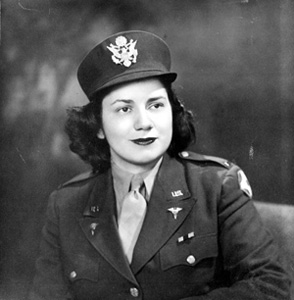
Part One: Condensation
When renting an apartment in a cold climate (thankfully 80% of my current readers are Californians and won't take issue with me calling the Chilean heartland a cold climate, when it is indeed moderate), double check to make sure your refrigerator is plugged in. It is difficult to determine if the beverages in the refrigerator are cold if it is only 47º Fahrenheit in the apartment. 47ºF can make your hands very cold (or numb), and everything you touch feel neutral. If this happens to your hands (they make things feel neutral), there are other clues to help you determine if your refrigerator is functioning. Does it make those periodic humming and rattling noises? If there is a bulb inside (in South America, there rarely is), does a light go on when you open the door? Is there condensation on the outside of beverage containers when you remove them from the refrigerator? A no answer to any or all of these questions could be an indicator that the temperature inside the refrigerator, and the temperature outside the refrigerator are potentially equal.
Part Two: When Am I Ever Going to Use This?
(A Brief Tutorial for the American Readership, and Otherwise Questionably Educated)
Well, let's face it. Not everything we learned in 4th grade was retained. What was retained is not always easily recalled. And I do want my readers to experience Latin American cultural emersion on a visceral level; therefore, it is important that you understand Celsius, in order to grasp the temperature-related catastrophe that follows.
The evening temperature in my apartment is 47ºF. This is evident because the outside temperature (as indicated by my iPhone wireless weather application) is 47ºF, and there is no insulation (I can hear my neighbors pee), and no condensation on the windows indicating otherwise. 47ºF equals 8.33ºC, according to the following conversion formula:
C = (F-32) x 5/9
Reverse the formula, and you will find:
F = C x 9/5 + 32
If you're inclined to check my math (and you probably should), don't forget the order of operations (Please excuse my dear Aunt Sally). If you can't recall what that sentence signifies, remember: Parenthesis; Exponents; Multiplication; Division; Addition, and finally Subtraction. If you'd like to watch someone else do the math, check out this conversion formula demonstration on YouTube. It's fabulous. The actor has impeccable handwriting, a soothing voice, and pretty hands.
If you're frustrated with scratch paper and hyperlinking, don't worry; there's an easy way to estimate the conversion in your head (not for those who need a tip calculator):
1. Double the Celsius Temperature;
2. Subtract 10%;
3. Add 32º
Points of reference, and some other convenient givens:
- 8.66ºC is cold, but it is 6ºC warmer than it needs to be for snow.
- Water freezes at 0ºC.
- Water boils at 100 ºC.
- Milk spoils when stored at temperatures about 40ºF, and ideally should be stored well below 40ºF, between 1 and 4ºC.
- In short, even though the temperature indoors in Chile (and indoors at Christmas in The Cold Bedroom for those of you who visit frugal fathers back east during the holidays), it is not cold enough to store milk.
Perhaps this is what Grandpa means when he claims, "It's not that cold." This translates to, "It's not cold enough to snow. It's not cold enough to spoil milk. Put on a sweater."
Part Three: Check Your Math
Cultural Generalizations and Other Miscalculations
No, milk stored in a sack (instead of a plastic or glass bottle) does not smell different in Chile. Refrigerators in Chile are no quieter than refrigerators in North America. Just because they have a more efficient system of heating water (they don't use water heaters, water is instantly heated when you turn on the faucet), doesn't mean they have a more efficient system of refrigeration.
Chileans are ahead of Americans in so many technological, social, and environmental ways. The internet is not a resource divided by class. No one even knows what "dial-up" internet means. Wireless internet is cheap, fast, and widely accessible. The elderly and mentally ill are not living on the streets. Chile's literacy rate is upwards of 90%. It has the strongest economy in South America. Chileans reduce. Chileans reuse. Chileans recycle. Their public transportation system is efficient, rapid, and clean. They use collectivos, shared taxis for navigating winding, narrow, steep roads economically.
And Valpo is hardly utopia. It is, in significant ways, paradoxically similar to North America (at least from a grossly, narrow, Californian perspective). Valparaíso is a UNESCO world heritage site for its role in 19th century globalization, yet it is a very homogenous, insular community, lacking access to diversity and high quality international products. There is the expected racism directed towards indigenous cultures, and others of any sort (European study abroad students excepted). And while gay sex in not technically illegal, gay culture is mostly closeted. The suspicious, competitive glances of Chilean women towards the mascara-clad teenage girls of Chile's emerging goth, youth subculture (and the frowning, young girls rocking baby dolls while watching their male counterparts play soccer and ride skateboards) suggest the progress of electing a woman president has not made its way to the streets of Valparaíso.
The Southern hemisphere, while reversing the seasons (still disorienting after three summer/winters & winter/summers here), does not reverse the laws of capitalism, or physics. Even on the moon, a feather and a bowling ball fall at the same rate, and, I imagine, milk spoils at the same temperature. Otherwise, astronauts wouldn't bring that dehydrated neapolitan ice cream with them on expeditions.


